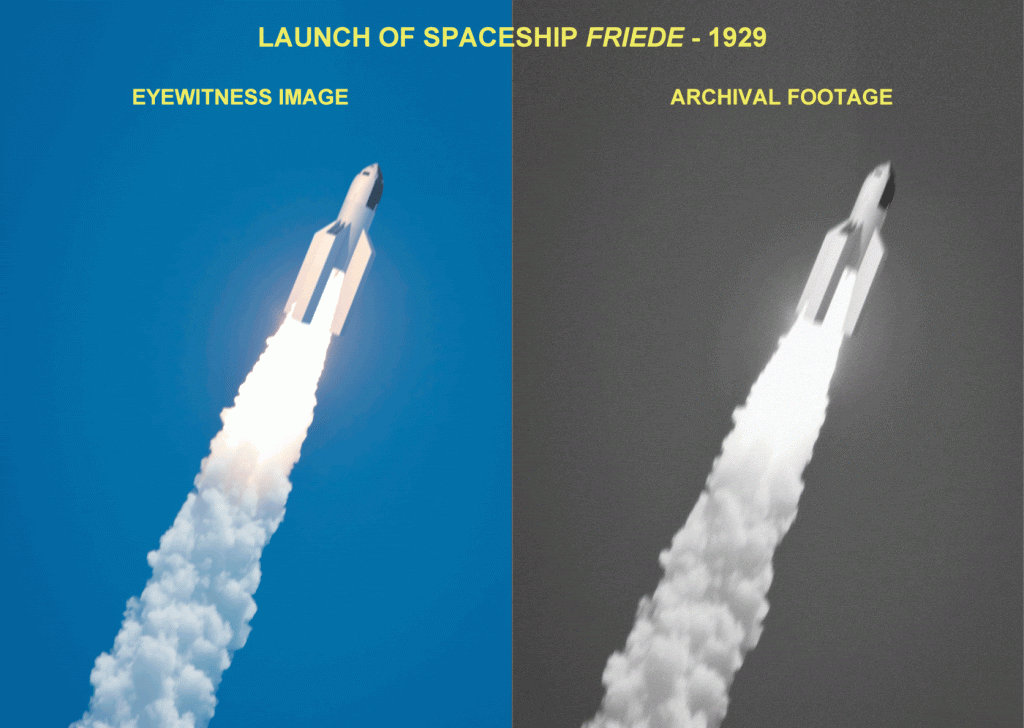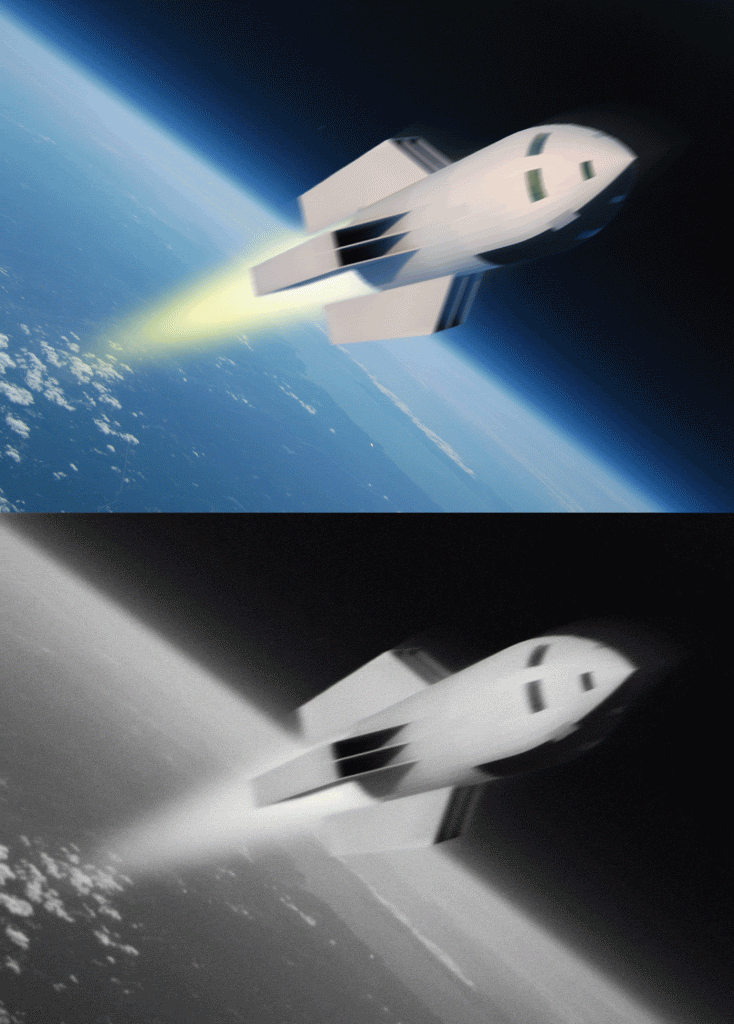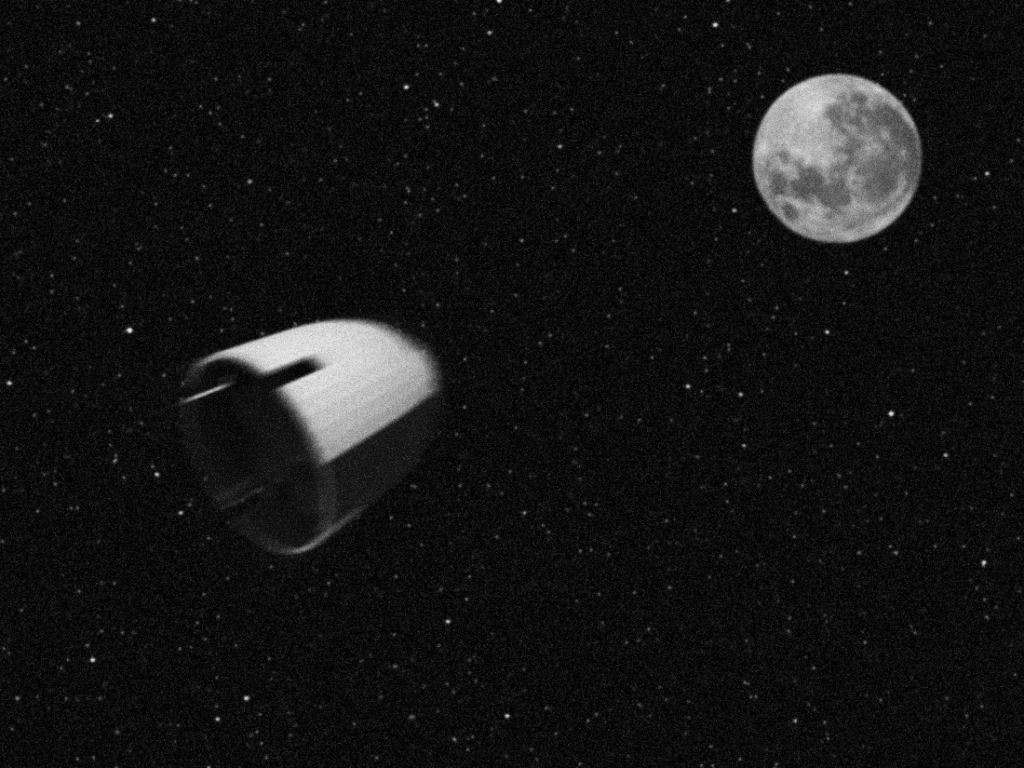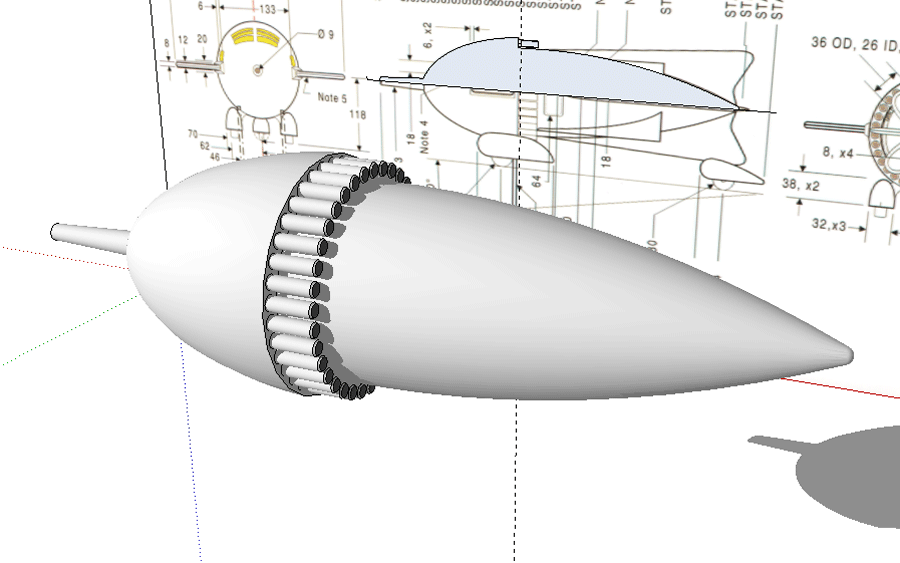Even though Dr. Zarkov’s Rocket Ship is pure pulp sci-fi in terms of design there are some interesting things about. The full-size exterior mock-up of the ship itself predates the
Flash Gordon serials, but still it was a full-size exterior. Of course we also get to see a “flying” filming miniature and the two exteriors are not exactly the same it appears (much like the differences in the full-size and miniature filming models of the TOS shuttlecraft). The flying miniature rocketship appears not to have the rivet detail that is apparent on full-size exterior, notably around the access hatch and where the winglets fasten to the fuselage. The original design (seen in the screencaps) did not have the ray cannon affixed to the bow (it was added later in the serials), but it is included in the reference drawings I’m working from and so I’m including it also. The one real detail I’m uncertain about is how the forward wheel housings are attached to the fuselage and details for the wheels as well---those details are lacking in the reference drawings. I don’t know if I’m that keen on studying hours of serial footage just to get a better understanding of tthat detail.
The interior set we see is not actually the interior of the full-size exterior. As I understand it two interior sets were made originally although I don’t recall having seen the aft compartment myself. Still it’s interesting the contours of the interior don’t match the exterior as if the designers or producers thought well enough to account for the ship’s mechanicals and hence less interior space than one might have expected. Certainly the interior is interesting in the fact that there is only one seat available (for the pilot) when the craft is supposed to be able to hold more than one person. Anyone else besides the pilot has to make do with hand-holds while standing.
Another interesting aspect is that the ship is actually more like a rocket plane than the traditional upright missile style design. It takes off and lands more like an aircraft, but with apparently very little take-off area required. Although it’s called a
rocket ship we also hear it is propelled by a “gravity neutralizer” which is mentioned more prominently in regard to landing the ship. If we accept this as some form of anti-gravity system then the short take-offs and landings as well as the rather small and stubby wing/stabilzers make more sense. Originally the numerous tubes surrounding the middle of the fuselage were intended as the rockets, but later in the serials the four aft facing exhaust ports (or what look like such) are also used as rockets. Interesting, too, that when the ships of
Flash Gordon were shown in flight they were accompanied by an electrical like sparking and humming sound f/x rather than the roar of a rocket engine, which, unlike today, would likely have been a very uncommon and unfamiliar sound to most in the 1930s.
The ship doesn’t have an actual airlock (much like a lot of sci-fi designs including the TOS shuttlecraft), but rather has a simple access hatch. Unlike in
Star Trek and othe SF films, though, in
Flash Gordon they thought nothing of opening this door while in flight in space, something they knew better not to do or even suggest on
Star Trek and other film and television SF.
As dated as it might look to contemporary eyes I must admit, much alike the TOS shuttlecraft, it would be a blast to have a full-size mock-up on hand to display and goof around with.



 The crew take-off in a prone position (much like modern astronauts), but the controls are not easily accessible---they have to roll over sideways and reach for the control levers.
The crew take-off in a prone position (much like modern astronauts), but the controls are not easily accessible---they have to roll over sideways and reach for the control levers. 





 Nice work though!
Nice work though!
